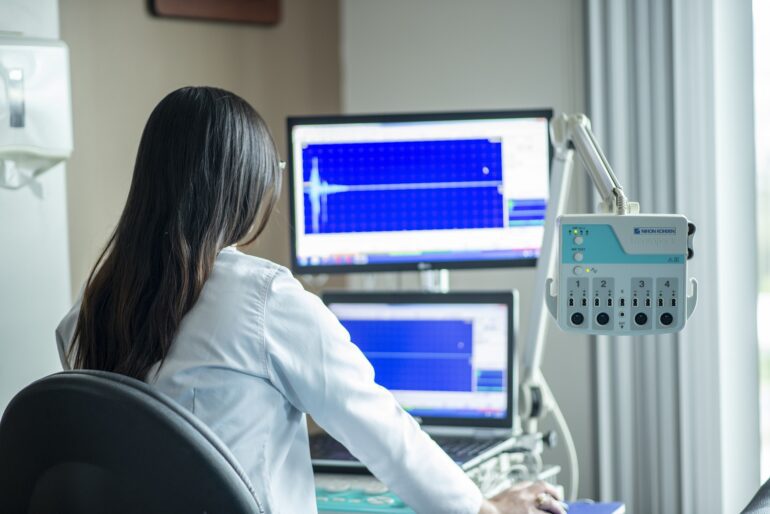TL;DR:
- Validation and documentation are vital when integrating machine learning into medical devices for regulatory submission.
- Medical devices fall into different FDA classifications, each with its own testing and approval requirements.
- Various types of testing, such as biocompatibility and performance testing, are necessary for FDA approval.
- Clear specifications, representative training data, and rigorous validation are essential for developing successful medical devices with machine learning.
- Detailed documentation outlining device specifications, operating conditions, and machine learning algorithms is required for FDA approval.
- Implementing guardrails ensures outputs generated by machine learning algorithms comply with regulatory requirements and ensure patient safety.
Main AI News:
Developing a medical device that harnesses the power of machine learning entails a range of crucial elements that must be thoroughly understood and incorporated. Particularly, companies aiming for certification from the U.S. Food and Drug Administration (FDA) should take note of the following considerations.
Validation and Documentation: A Critical Imperative
The significance of validation and documentation in embedded firmware when integrating machine learning into a medical device cannot be overstated. Documenting device specifications plays a pivotal role in the regulatory submission process.
To gain premarket approval, the FDA mandates detailed documentation outlining the device’s intended use, performance characteristics, and operating conditions. This documentation is indispensable in the regulatory submission process. The FDA has also issued guiding principles for medical devices utilizing machine learning, further emphasizing the need for meticulous documentation and validation.
Navigating Device Classifications and Testing Requirements
Medical devices fall into three FDA classifications, and it is crucial for companies to identify the appropriate classification for their device.
Class I: Low to moderate-risk medical devices necessitate general controls such as establishment registration, quality system regulation, and labeling requirements.
Class II: Devices with a moderate to high risk require special controls. These devices must satisfy both general controls and additional special controls, which might involve performance standards, guidelines, and testing requirements. Most Class II devices require premarket notification (510(k) clearance) to demonstrate safety and effectiveness.
Class III: High-risk medical devices necessitate premarket approval. These devices must adhere to general controls, special controls, and premarket approval (PMA) requirements. The PMA process entails rigorous testing, including preclinical and clinical trials, to establish the device’s safety and effectiveness.
Various Types of Essential Testing
FDA approval mandates several types of testing:
1. Biocompatibility Testing: Assesses the device’s biological response to ensure it is safe for use in or on the human body.
2. Electrical Safety and Electromagnetic Compatibility Testing: Evaluates the device’s safe operation and its interaction with other electrical equipment.
3. Performance Testing: Examines the device’s accuracy and functionality. Software validation and verification testing guarantee the safety and effectiveness of the software.
4. Usability Testing: Focuses on assessing the device’s ease of use and user experience.
Training, Data, and Documentation: Establishing a Solid Foundation
When developing a medical device with machine learning, clear specifications must be defined, including the algorithms employed, data sources, and limitations. The training data should be representative of the intended patient population, and potential biases need to be addressed. Rigorous validation, potentially utilizing independent datasets, is necessary to demonstrate the device’s generalizability.
The specific documentation requirements for FDA approval depend on the device classification and chosen regulatory pathway. The FDA mandates detailed documentation outlining the device’s intended use, performance characteristics, operating conditions, and machine learning algorithms employed. This documentation should comprehensively outline the data sources, training procedures, and validation processes.
Implementing Guardrails for Enhanced Safety
Embedded software plays a critical role in the operation, data processing, and output generation of modern medical devices. Therefore, it is imperative to implement guardrails to ensure that the outputs generated by the machine learning algorithm adhere to the expected range of values and comply with regulatory requirements. Testing these guardrails is essential to ensure patient safety and the proper functioning of the medical device.
Conclusion:
Integrating machine learning into medical devices requires careful attention to validation, documentation, testing, and regulatory compliance. Companies that navigate these considerations effectively can seize opportunities in the market by developing and gaining approval for innovative medical devices that leverage the power of machine learning. The ability to meet regulatory requirements and address critical concerns related to safety and effectiveness will position businesses for success in the evolving healthcare industry.

